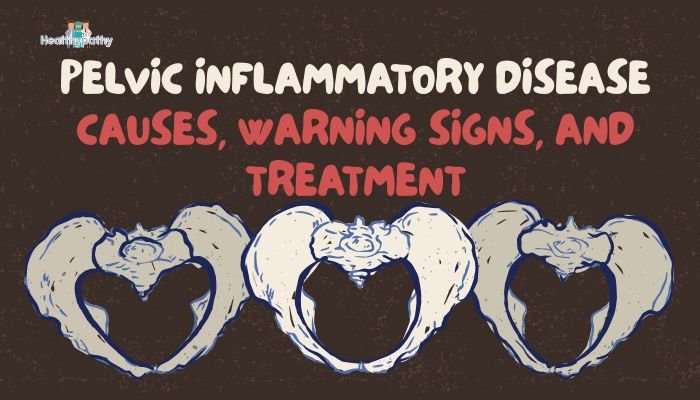Introduction
In recent years, the United States has faced a troubling trend: maternal mortality rates have risen, setting the country apart from other high-income nations that have seen overall declines. These deaths often occur during or shortly after pregnancy from complications that are frequently preventable with proper care. Yet, as more women are left at risk, it’s evident that social, economic, and healthcare system factors contribute to this escalating crisis. This article uncovers key causes, risk factors, and solutions aimed at improving maternal outcomes—because every mother deserves a healthy journey from pregnancy to postpartum.
Understanding Maternal Mortality
Defining Maternal Mortality
Maternal mortality refers to the death of a woman during pregnancy or within a specific period (often 42 days) after the end of pregnancy due to causes directly related to or worsened by pregnancy. However, some definitions extend the postpartum window up to a year if pregnancy contributed significantly.
Current Statistics in the U.S.
- Steady Increase: While global maternal mortality rates have generally dropped, the U.S. has seen an increase over the past two decades.
- Disparities: Certain populations—particularly Black and Indigenous women—face maternal mortality rates two to three times higher than White counterparts.
Key Causes and Contributors
Limited Access to Prenatal and Postnatal Care
Proper, consistent prenatal checkups help detect early complications like hypertension or gestational diabetes. Women in rural or underserved areas often lack nearby clinics or reliable transportation, increasing the risk of missed diagnoses.
High Rates of Chronic Conditions
Conditions such as hypertension, obesity, or diabetes can lead to pregnancy complications if poorly managed. Rising obesity levels, for example, correlate with gestational diabetes and other metabolic challenges, heightening maternal risk.
Healthcare Inequities
- Racial Disparities: Systemic racism can lead to biased treatment, delayed diagnoses, and mistrust between providers and patients of color.
- Insurance Gaps: Discontinuity in coverage—often postpartum—impedes ongoing care and follow-up.
Postpartum Care Gaps
While much focus is on prenatal and labor care, many maternal complications—such as postpartum hemorrhage or cardiomyopathy—arise after childbirth. A single 6-week postpartum check isn’t always enough to catch issues. Women need extended postpartum support to prevent silent or delayed emergencies.
Fragmented Healthcare System
Poor coordination among specialists—like obstetricians, cardiologists, or mental health professionals—may lead to missed warning signs. The U.S. system often lacks integrated maternity care models that unify providers around a mother’s evolving needs.
Groups at Higher Risk
Black, Indigenous, and Women of Color (BIPOC)
Due to systemic inequities, BIPOC women experience higher rates of chronic conditions, fewer resources for comprehensive care, and potential provider bias. These structural barriers intensify maternal mortality risk.
Low-Income Women
Without stable health insurance or the means to take time off work, consistent prenatal checkups can be challenging. Moreover, living in “maternity care deserts”—where no obstetric services exist—further complicates safe pregnancy management.
Women with Complex Medical Histories
Women with heart disease, autoimmune conditions, or prior pregnancy complications require specialized care. Delays in referral to high-risk obstetrics can be detrimental.
Warning Signs Not to Ignore
Recognizing postpartum and late-pregnancy red flags saves lives. Seek immediate medical attention if you experience:
- Severe Headaches or Vision Changes (possible preeclampsia/eclampsia)
- Extreme Shortness of Breath or Chest Pain (pulmonary embolism, cardiac issues)
- Heavy Vaginal Bleeding or Large Clots (postpartum hemorrhage)
- Fever and Chills (possible infection)
- Calf Pain or Swelling (risk of deep vein thrombosis)
Strategies to Address the Crisis
Early and Continuous Prenatal Care
Regular checkups allow for early detection of risk factors, such as high blood pressure or abnormal glucose levels. Integrate screenings for mental health and social support needs as well.
Postpartum Follow-Up
Encourage multiple postpartum visits rather than a single 6-week exam. Gradually tapering from earlier weekly or bi-weekly visits can catch late-arising complications.
Invest in Community Health
Rural or underserved areas often need better infrastructure to recruit obstetric providers, create birthing centers, and offer telemedicine for remote monitoring of blood pressure or other metrics.
Racial Equity in Healthcare
- Implicit Bias Training: Healthcare workers need education on recognizing and countering biases that can lead to dismissive care.
- Doulas and Midwives: Culturally competent support teams may improve maternal satisfaction and outcomes, especially among communities of color.
Legislation and Policy
Some states have expanded Medicaid coverage to one year postpartum, acknowledging continued health risks. Policymakers can also push for mandated maternal mortality reviews to track causes and solutions more systematically.
Empowering Mothers
Communication with Providers
Mothers should feel comfortable asking questions, seeking second opinions, or voicing concerns early. If you sense your symptoms aren’t taken seriously, advocate for yourself or have a supportive companion do so.
Monitoring Chronic Conditions
If you have a history of diabetes or hypertension, careful management before and during pregnancy lowers complications. This includes medication management, dietary guidance, and frequent checkups.
Emotional and Peer Support
Joining pregnancy or postpartum support groups fosters shared experiences and can highlight local resources. If postpartum depression or anxiety arises, seeking mental health care is crucial for maternal stability.
Conclusion
Rising maternal mortality in the U.S. highlights the urgent need for better access to consistent prenatal and postpartum care, recognition and reduction of healthcare inequities, and enhanced support for at-risk populations. By spotting warning signs, bridging policy gaps, and offering comprehensive perinatal services, we can help more mothers navigate pregnancy safely. The solution demands collaborative efforts among policymakers, healthcare providers, and communities to ensure all women, regardless of background, can expect a healthy pregnancy and birth experience.
References
- https://www.cdc.gov.
- World Health Organization (WHO). Maternal mortality. 2021.
- Petersen EE, Davis NL, Goodman D, et al. Racial/ethnic disparities in pregnancy-related deaths. MMWR Morb Mortal Wkly Rep. 2019;68(35):762–765.
- American College of Obstetricians and Gynecologists (ACOG). Levels of maternal care. 2019.
- MacDorman MF, Declercq E, Cabral H, Morton C. Recent increases in the U.S. maternal mortality rate. Obstet Gynecol. 2016;128(3):447–455.







